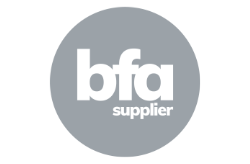The key to effective marketing, is to enable your target audience to image themselves in the role of a franchise owner. Last month, we looked at how some brands may be limiting their marketing, based on their messaging aimed at women. However, if 50% of women under 30, and 20% of women over 45 don’t have children, you could be only speaking to 30% of women, if you speak about building a business around their family/kids.
But, let’s take it a little deeper. Because recent researched showed 25% of men over 42 don’t have kids, either by choice, or through circumstances. And whilst data around childless men younger than this is unattainable, we do know more couples choose a DINK (dual income, no kids) lifestyle. So, when we talk about building a business around family and talk about the ability to go to kids’ sports days, for example, a large portion of your target audience probably aren’t interested.
But it’s more than our messaging!
It’s about how we’re representing people through the imagery we use in our franchise marketing, too. Are we limiting our lead pool, by making it harder for some people to see themselves represented as business owners?
A quick survey into the kind of imagery used in print magazines across the franchise industry, indicated this might well be the case. Especially as the majority of images shown were of white, middle-aged men.
To assess the images used in printed publications, we looked at the number of times a man/group of men was used, in comparison to women/group of women, and mixed groups, across four franchise-focus magazines published during 2023. One of the magazines included a specific “woman-focus” section.
- Man/Group of just men = 46.6%
- Woman/Group of just women = 38.6%
- Mixed couple/pair = 14.8%
- Mixed group (3 or more people) = 104 times
(These tended to consist of including a “token” person of the opposite gender. So, where you had a group of 4 people, 3 would be male, and 1 would be female. The men & women in these group photos weren’t counted individually.)- Mostly male groups = 39.4%
- Mostly female groups = 29.8%
- Groups of equal balance = 30.8%
Of the mixed imagery, with men and women (either in pairs or a group)
- Men were shown as being in a position of authority over women, specifically, 9 times
- Women were shown as being in a position of authority over men, specifically, once.
Giving an overall feeling of the franchise industry being predominantly male.
We know from the Rose Review, women shy away from franchising, or business ownership, because they can’t see themselves in the role of business leader. So, is there more we could be doing as an industry, in 2024, to change this?
What about racial diversity?
The bfa is on a mission to improve the diversity and inclusion within franchising, across many facets. So, in a further assessment, we also looked at obvious racial diversity used in franchise imagery.
- White = 43.4%
- Black = 6.4%
- Asian = 14.5%
- Mixed groups = 35.7%
As with the gender groups, the mixed group usually included one person of colour, showing even white people compared to other ethnicities. Is this making it harder for people of colour, to see themselves running their own business?
What about people with disabilities? How are they represented in franchising?
Of all the images we assessed in all of the magazines, only 2 featured someone with an “obvious” disability in that they were sitting in a wheelchair. And of those 2, one was a cartoon, the other was a photo or a real person.
So, the images showed:
- 98.9% able bodied people
- 1.1% disabled people
Are we holding people back, who would make great additions to our franchise networks, by not expanding our lead pool through the images we’re using?
How will you focus your marketing in 2024?
As attention moves to marketing plans for next year, we wanted to highlight the potential “problem” and see if we can, together, make a difference to how franchising is presented through our imagery, as well as through our messaging. If people buy from people, and need to see someone like them in the industry they’re interested in joining, then the challenge is to open the door for those we’re missing to see what they can achieve with a franchise.
Who knows… your next best franchisee, could look completely different to you!

































